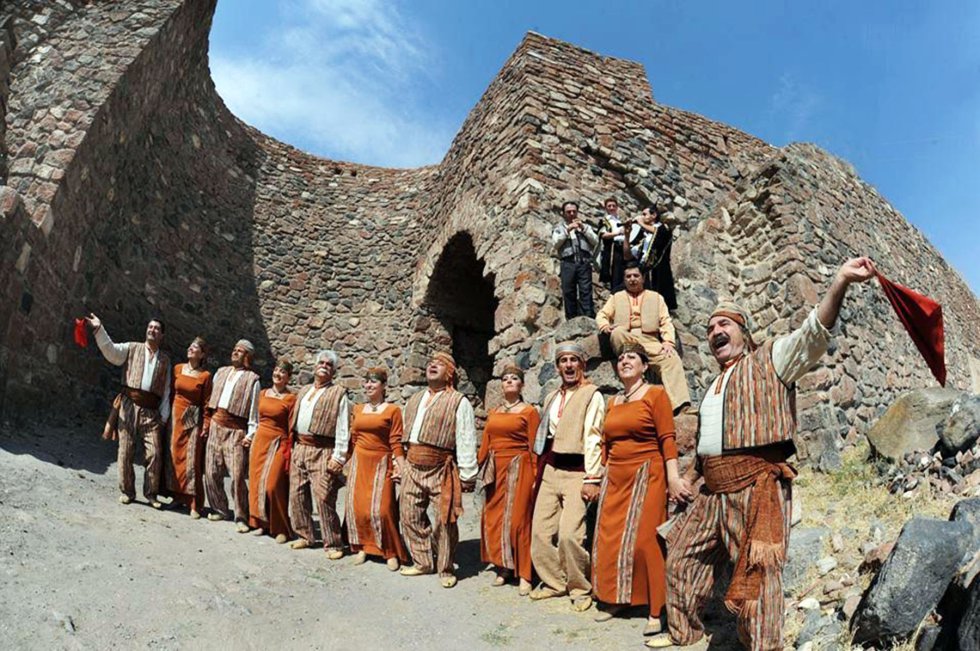JEJU ISLAND, South Korea (A.W.)—The 12th session of the UNESCO (United Nations Educational, Scientific, and Cultural Organization) Intergovernmental Committee for the Safeguarding of the Intangible Cultural Heritage has added the Armenian traditional dance Kochari on its “Intangible Cultural Heritage of Humanity” list.

During the six-day session, 24 committee members elected by the General Assembly of the 2003 UNESCO Convention discuss a number of issues that are important for the safeguarding of living heritage around the world.
“Kochari is a traditional dance that is widely performed throughout Armenia during holidays, festive celebrations, family ceremonies and other social events. It is open to all participants, irrespective of age, gender or social status,” reads a part of the dance’s entry on the UNESCO list.
According to the committee, Kochari, which is transmitted through both nonformal and formal means, provides a sense of shared identity and solidarity, contributes to the continuity of historical, cultural and ethnic memory, and fosters mutual respect among community members of all ages.
The committee has also noted that Kochari is one of the rare traditional dances whose chain of transmission has never been interrupted.
Details about the formal means of transmission, including the inclusion of a “folk song and dance” course in the curricula of schools in Armenia since 2004, educational programs in youth arts centers, increased visibility of the element through the Internet and other media outlets, and institutional initiatives, are noted in the dance’s description on the list.
“Non-formal transmission occurs within families and through spontaneously formed dance groups,” the entry states.
Below is a video entitled “Kochari, traditional group dance” produced by the Ministry of Culture of the Republic of Armenia, included in the entry for Kochari.
According to Armenia’s Deputy Minister of Culture Artur Poghosyan, there was an effort on the part of Azerbaijan’s UNESCO delegation to hinder the process of the dance’s being listed as a traditional Armenian dance, but that effort had failed.
Armenia was unanimously elected as a member of the Intergovernmental Committee for the Safeguarding of the Intangible Cultural Heritage of UNESCO (from the second regional group—Eastern Europe) for a four-year term (2016-2020) at the sixth session of the General Assembly of the States Parties to the 2003 Convention for the Safeguarding of the Intangible Cultural Heritage in 2016.
The 12th session of the Intergovernmental Committee for the Safeguarding of the Intangible Cultural Heritage of UNESCO, taking place in Jeju Island, concludes on Dec. 9.


Our culture is under constant attack by a never before heard of nation and culture before the 1920s: Azerbaijan. These people using everything they have learned, nay, stolen, from all neighboring nations are trying to come off as a “genuine” culture from which pretty much Armenians stole everything from.
Unfortunately, our institutions have been taking this too lightly to the point that the damage has already been done by turning what is supposed to be a ‘cultural’ organization into a political tool, available to the highest bidder. Azerbaijan now claims to be the “birthplace of carpets”, and of course, the simpletons at UNESCO let them get away with it. Now they are claiming “dolma”. Wake up Armenians, our culture is being stolen from us, and we just sit by complaining only AFTER the damage gets done.
The photo – the gateway of the dreadfully over-restored Dashtadem fortress – is also a reminder that Armenian culture, its built monuments, is under constant attack by Armenian oligarchs and the Armenian Church (and for that specific example also with a little help from the CIA and its “ambassador’s fund”).